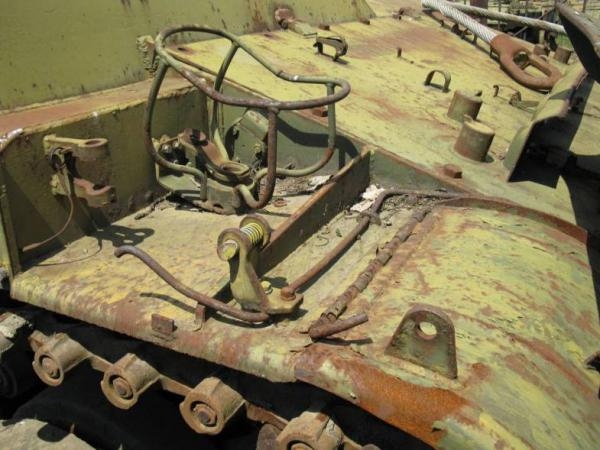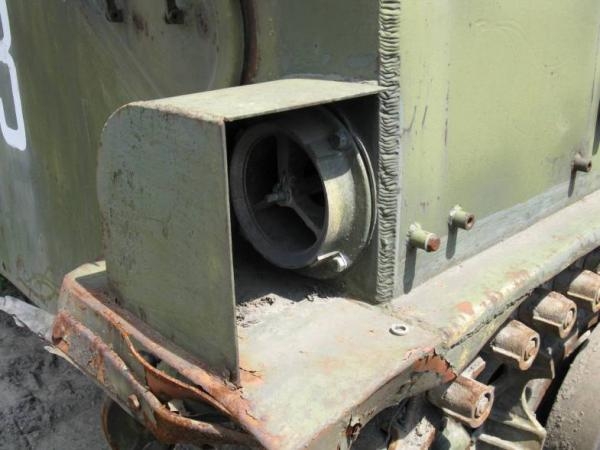A.V.
New Member
- Joined
- Feb 16, 2009
- Messages
- 6,503
- Likes
- 1,159
In the beginning of 70s military leadership of Soviet Union had a great interest in laser weapon development. Laser equipment was planned to put in space platforms, stations and aircrafts.
All the built units were based on stationary sources of energy and didn't meet the requirment of military space – full autonomy. This also didn't allow designers to carry out rigorous test. The government of the USSR ordered the Navy to test and work out autonomy. Laser gun which was figured in all documents as MSU (powerful propulsion unit) was decided to be installed to a ship.

Indeed, a lot had been changed in the ship's hull. Traps were replaced by stem and bow section, 1,5 metre wide board bulge were formed, additional storey was built as 1 module with all equipment and rooms, a crane of 100 tonne carrying capacity was installed. To lower the level of noise all living and service rooms had sound-absorbing isolation. Cofferdam (a narrow horizontal or vertical section separating neighbouring rooms) also emerged for this purpose."Akvilon" complex was installed very carefully. A great attention was paid at designing of its bearing.In October of 1984 first successful tests of "Foros" were carried out in Feodosiya. It was the first time in history of Soviet Navy when low flying missile had been promptly found and destructed by laser beam.But there were some disadvantages – the attack lasted for several seconds and preparations took more than 24 hours. Efficiency output was very low – about 5%. No doubt that scientists gained experience of using laser in the battle. But dissolution of the Soviet Union and following economic crisis stopped the experiments.




"Foros" wasn't the only Soviet Navy ship where laser units were tested.
Practically at the same, in 1978, began modernization of dry cargo ship "Dikson" in Sevastopol and building of laser unit in Kaluga. All the work on creating a new laser gun was kept in secret. It must have become the most powerful Soviet battle laser unit. The project was called "Aidar".
Modernization of "Dikson" required a great amount of money and resources. Moreover during the work designers often faced scientific and technical problems. For example, in order to equip the ship with 400 air bottles designers had to put off metal covering from both sides completely. It was found out later that hydrogen could be accumulated in confined space and blow by an accident. So they had to install heavy ventilation system. Especially for laser unit the top deck was designed to be opened as 2 parts. As a result builders had to strengthen the hull which lost its tenacity. To strenghten propulsion system the ship was equipped with 3 Tu-154 jet engines.
In the end of 1979 "Dikson" was moved to the Black Sea, the Crimea, Feodosiya. Here at Ordzhonikidze shipyard it was equipped with a laser gun and control systems. The crew settled the ship also here.




The first test of "Dikson" took place in summer of 1980. The ship had only one gun salvo and it was enough to strike the target located in 4 kilometres on the beach. The hit was registered by a heat sensor installed in the target though there were no visiual signs of the beam and damage. Efficiency output also accounted for 5%. The energy of the beam was absorbed by expulsion of sea water.
However the tests were recognized to be successful. Designers created the laser for use in space and as we know there is perfect vacuum there.
Besides low efficiency output and battle features the unit had huge size and was difficult in service.
Tests continued till 1985. As a result researchers got information – in what way battle laser units can be built, in what kinds of ships to be installed, they could even improve the power of laser. All planned tests had been successfully finished by 1985.
Nevertheless designers and military authorities understood it was unlikely to put such a "monster" in orbit in next 20-30 years. These arguments were announced to senior authorities who cared besides these problems about many-millioned expenditures and time constraints of building the laser.
By that time transoceanic opponent of the USSR faced the same problems. Space weapon race stalled in the very beginning. The results were negotiations on "defence and space" which influenced in double-ended curtailment of military space programmes. The USSR stopped all the work in several space programmes. Project "Aidar" was also finished and unique ship "Dikson" was forgotten.
Both ships were included in 311 division of experimental ships. In 1990s laser units were dismantled, technical documentation destroyed. Pioneers of laserbuilding "Foros" and "Dikson" were sent to be destroyed.




"Foros" wasn't the only Soviet Navy ship where laser units were tested.
Practically at the same, in 1978, began modernization of dry cargo ship "Dikson" in Sevastopol and building of laser unit in Kaluga. All the work on creating a new laser gun was kept in secret. It must have become the most powerful Soviet battle laser unit. The project was called "Aidar".
Modernization of "Dikson" required a great amount of money and resources. Moreover during the work designers often faced scientific and technical problems. For example, in order to equip the ship with 400 air bottles designers had to put off metal covering from both sides completely. It was found out later that hydrogen could be accumulated in confined space and blow by an accident. So they had to install heavy ventilation system. Especially for laser unit the top deck was designed to be opened as 2 parts. As a result builders had to strengthen the hull which lost its tenacity. To strenghten propulsion system the ship was equipped with 3 Tu-154 jet engines.
In the end of 1979 "Dikson" was moved to the Black Sea, the Crimea, Feodosiya. Here at Ordzhonikidze shipyard it was equipped with a laser gun and control systems. The crew settled the ship also here.




The first test of "Dikson" took place in summer of 1980. The ship had only one gun salvo and it was enough to strike the target located in 4 kilometres on the beach. The hit was registered by a heat sensor installed in the target though there were no visiual signs of the beam and damage. Efficiency output also accounted for 5%. The energy of the beam was absorbed by expulsion of sea water.
However the tests were recognized to be successful. Designers created the laser for use in space and as we know there is perfect vacuum there.
Besides low efficiency output and battle features the unit had huge size and was difficult in service.
Tests continued till 1985. As a result researchers got information – in what way battle laser units can be built, in what kinds of ships to be installed, they could even improve the power of laser. All planned tests had been successfully finished by 1985.
Nevertheless designers and military authorities understood it was unlikely to put such a "monster" in orbit in next 20-30 years. These arguments were announced to senior authorities who cared besides these problems about many-millioned expenditures and time constraints of building the laser.
By that time transoceanic opponent of the USSR faced the same problems. Space weapon race stalled in the very beginning. The results were negotiations on "defence and space" which influenced in double-ended curtailment of military space programmes. The USSR stopped all the work in several space programmes. Project "Aidar" was also finished and unique ship "Dikson" was forgotten.
Both ships were included in 311 division of experimental ships. In 1990s laser units were dismantled, technical documentation destroyed. Pioneers of laserbuilding "Foros" and "Dikson" were sent to be destroyed.




























